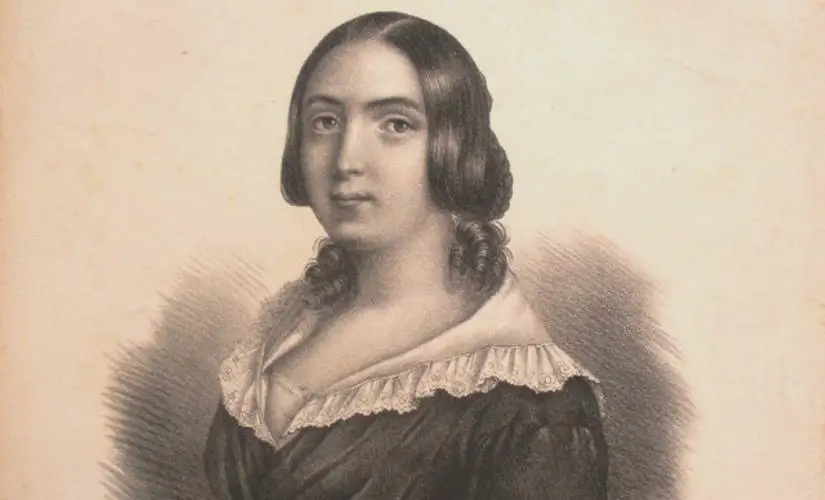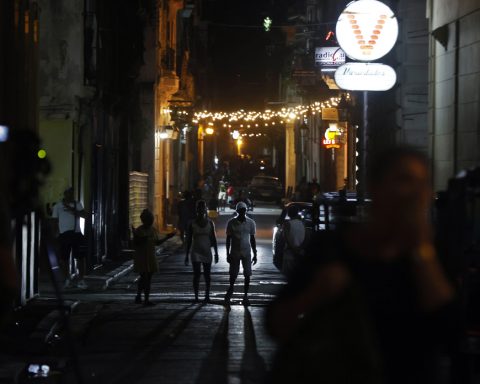HARRISONBURG, United States. — This February 1st marks the 150th anniversary of the death of María Gertrudis de los Dolores Gómez de Avellaneda y Arteaga, a leading figure in 19th-century Spanish-American literature.
Despite its long name —something usual at the time— this poet, playwright, writer and feminist forward It was also known in Spanish literary circles as “La Avellaneda” or simply “Tula”.
It is affirmed that he had a strong character and he attested to this when he was barely fifteen years old, when he broke the marriage commitment that his maternal grandfather had arranged with a wealthy and distant relative. For this reason, her grandfather excluded her from her will. That position in defense of her feelings was always with her.
He left Cuba with his family when he was 22 years old and during the voyage he wrote his famous sonnet “Al partir”, considered an anthological piece of insular poetry. Some themes were already present in it that she would continue to address, such as introspection and existential tearing.
Spain, land of its literary consolidation
Once in Spain, the “Tula” family settled in La Coruña, the city where his stepfather’s relatives resided. There she wrote her first poems and once again showed her independence and strength of character when she broke up with Mariano Ricafort Palacín y Abarca, because he did not approve of his girlfriend being a writer.
Together with her brother, Manuel Gómez de Avellaneda, the poetess moved to Andalusia, where she published her first verses in newspapers in Cádiz and Seville under the pseudonym “La Peregrina”, obtaining great recognition.
He settled in the city of Seville, where he met in 1839 who would be the first great love of his life, Ignacio de Cepeda Alcalde. She lived a stormy relationship with him, in which she did not feel reciprocated. That marked her forever. Her intricacies and love affairs were recorded in her correspondence, published after Cepeda’s death. It was also in Seville where Gertrudis presented her first play, the drama “Leoncia”.
In 1840 he moved to Madrid, inserting himself with great success in the literary and cultural life of the metropolis. There he published, a year later, his first book of verses by him, entitled “Poesías”, which was welcomed by the critics of the time. That same year he published his novel “Sab”, which some mistakenly continue to describe as the first anti-slavery novel, when the truth is that this merit corresponds to Anselmo Suárez Romero, also Cuban.
In 1842, La Avellaneda published her novel “Dos mujeres”, which caused the immediate rise of some detractors due to the position that the author assumed regarding the defense of women and their right to divorce as a solution to imposed relationships. Her third novel, “Espatolino”, made her a pioneer in dealing with one of the edges of the prison issue.
If the Cuban woman had already achieved relevance with these works, her second play, titled “Alfonso Munio”, premiered in 1844, caused her to obtain a tremendous triumph in the intellectual world of the time, which not only enhanced her worth as a writer , but it made her an inescapable celebrity.
Parallel to her growing fame as a writer was her meeting with the poet Gabriel García Tassara, with whom she had another love affair, as stormy as the previous one. The Cuban woman became pregnant and single in the midst of a pacata society, cloistered more in the rigidity of custom and the infallible sentence, than in the understanding of human dramas. Sensing the consequences of her actions and perhaps desperate for what was to come, she wrote the poem “Farewell to my lyre”, thinking that her literary career had come to an end.
However, in 1845 she won the first two prizes in a contest organized by the Artistic and Literary Lyceum of Madrid, which placed her at the pinnacle of fame. That aura of success was overshadowed by the attitude assumed by Tassara and the death of her daughter. Sample of the pain that seized the writer from the birth of the girl until her death, are the letters that she wrote to the poet asking him to see her daughter before she died, a wish that he did not fulfill.
On May 10, 1846 Gertrudis married Pedro Sabater, civil governor of Madrid, her first husband, but two months later he would die in her arms.
In 1856 she married Colonel and influential politician Domingo Verdugo y Massieu. After a painful incident as a result of the premiere of the comedy “Los tres amores”, the Cuban woman’s husband was seriously injured, which caused the couple to decide to travel to Cuba in the hope that the husband would heal from his injuries.
The reception given to the poetess in Havana was extraordinary, and during her stay on Gertrudis Island she received numerous expressions of affection and admiration.
With the death of her second husband, in 1863, the writer accentuated her religious spirituality until she died at the age of 58 in Madrid, on February 1, 1873.
In total he wrote eleven novels, of which the most important has been “Sab”. He also left an extensive poetic work, several legends and seventeen plays.
It is difficult to find a 19th century Latin American writer who has achieved as much success as Gertrudis Gómez de Avellaneda. Such was her fame that Spain considers her a peninsular writer, while we Cubans defend her belonging to our literary culture. In any case, she will continue to be one of the greats in the history of literature written in Spanish.
Feted in the public sphere, Gertrudis Gómez de Avellaneda was a forward who had an unhappy private life. She plunged headlong into two turbulent love affairs where passions reached their climax, but she ended up a religious ascetic. Her life was an arc stretched between the two extremes.
OPINION ARTICLE
The opinions expressed in this article are the sole responsibility of the person who issues them and do not necessarily represent the opinion of CubaNet.
















